
Figure 1 - Diagrammatic representation of the circumvertical skin sparing mastectomy with dermal barrier flap for immediate breast reconstruction. In A, circumvertical design: circumareolar and lateral vertical infra areolar incision lines; skin excision is limited to the circumareolar area. In B, completed mastectomy and de-epithelialized infra-areolar dermal barrier flap to be advanced under the lateral skin flap. In C, dermal barrier flap anchored to the infero-lateral aspect of the pectoralis major muscle and linear vertical suture line.
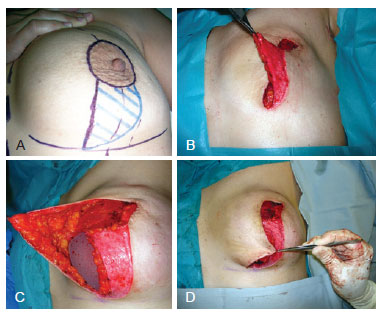
Figure 2 - In A, circumvertical design. In B, dermal barrier flap. In C, lateral advancement of the dermal barrier flap which is sutured to the pectoralis major muscle. In D, vest-over-pant advancement of the lateral skin flap.
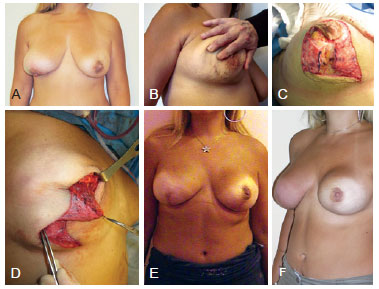
Figure 3 - In A, patient presenting for bilateral mastectomy with previous left partial mastectomy and radiotherapy and recent right inferior quadrant partial mastectomy causing gross deformity. In B, scar of right partial mastectomy greatly limiting the infra-areolar vertical incisions. In C, dermal barrier flap split vertically into medial and lateral flaps. In D, Z-plasty advancement of the 2 dermal barrier flaps. In E, result at 6 months of right breast reconstruction and left breast reconstruction with nipple-areola preservation and circumvertical dermal barrier technique despite previous radiotherapy. In F, result at 1 year.
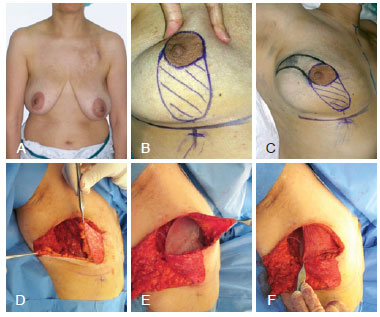
Figure 4 - In A, patient presenting for right mastectomy and immediate alloplastic reconstruction. In B, drawing of circumvertical design. In C, supero-lateral extension of skin excision mandated by oncologic considerations. In D, dermal barrier flap. In E, lateral advancement of the dermal barrier flap. Reconstruction with a Becker permanent expander because of planned post-operative radiotherapy. In F, implant covered superiorly by the pectoralis major muscle.
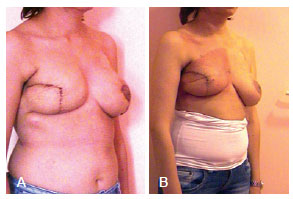
Figure 5 - In A, immediate post-operative result. Expander was fully inflated intra-operatively and contralateral mastopexy was performed simultaneously with the mastectomy and reconstruction. In B, result after completion of radiotherapy.
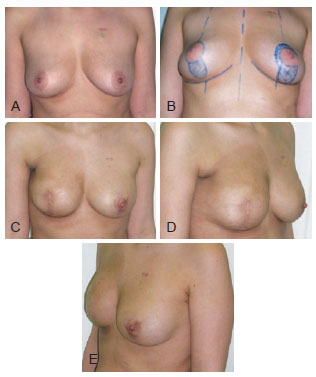
Figure 6 - In A, patient presenting for right skin sparing mastectomy and axillary lymph node dissection and left prophylactic mastectomy. In B, planning for bilateral circumvetical incisions and dermal barrier flap with nipple areola preservation on the left. In C, D, and E, reconstruction results at 1 ½ year. Contour deformity of the anterior axillary fold and minor deformity in projection could be corrected with fat grafting, however the patient was satisfied by the result and refused any further procedures.
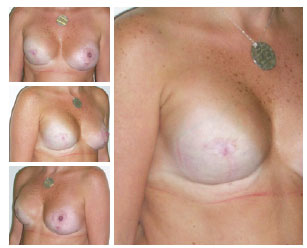
Figure 7 - 1 year post-operative result of right skin reducing mastectomy and alloplastic reconstruction with simultaneous contralateral circumvertical mastopexy. Purse string closure of the upper incision shortens scar length and simulates a nipple. The patient refused reconstruction of the areola by tattooing.














